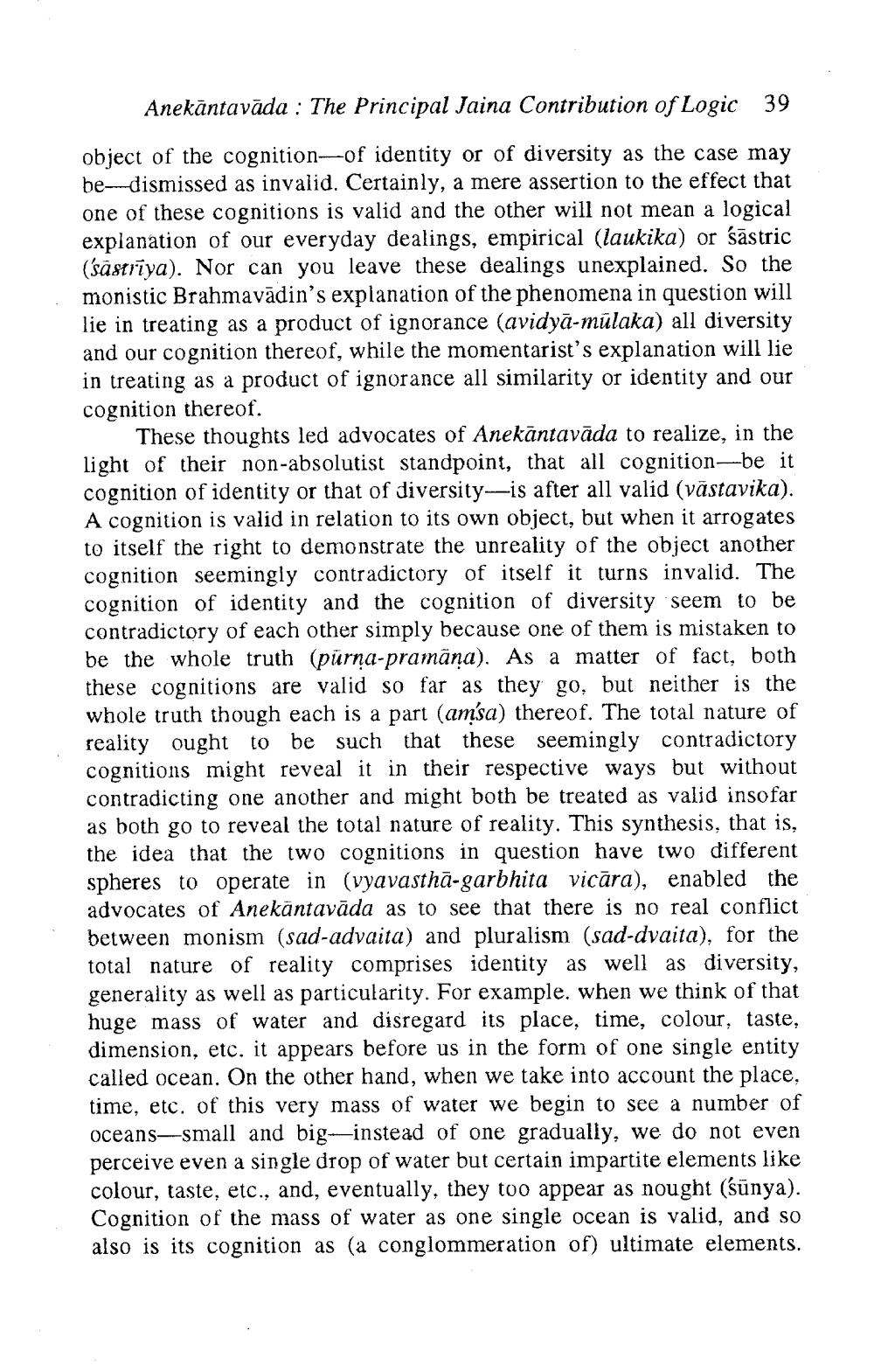________________
Anekāntavāda : The Principal Jaina Contribution of Logic
39
object of the cognition of identity or of diversity as the case may be-dismissed as invalid. Certainly, a mere assertion to the effect that one of these cognitions is valid and the other will not mean a logical explanation of our everyday dealings, empirical (laukika) or śāstric (säsriya). Nor can you leave these dealings unexplained. So the monistic Brahmavādin's explanation of the phenomena in question will lie in treating as a product of ignorance (avidyā-mulaka) all diversity and our cognition thereof, while the momentarist's explanation will lie in treating as a product of ignorance all similarity or identity and our cognition thereof.
These thoughts led advocates of Anekantavāda to realize, in the light of their non-absolutist standpoint, that all cognition—be it cognition of identity or that of diversity--is after all valid (vastavika). A cognition is valid in relation to its own object, but when it arrogates to itself the right to demonstrate the unreality of the object another cognition seemingly contradictory of itself it turns invalid. The cognition of identity and the cognition of diversity seem to be contradictory of each other simply because one of them is mistaken to be the whole truth (pürna-pramāna). As a matter of fact, both these cognitions are valid so far as they go, but neither is the whole truth though each is a part (amsa) thereof. The total nature of reality ought to be such that these seemingly contradictory cognitions might reveal it in their respective ways but without contradicting one another and might both be treated as valid insofar as both go to reveal the total nature of reality. This synthesis, that is, the idea that the two cognitions in question have two different spheres to operate in (vyavasthā-garbhita vicāra), enabled the advocates of Anekāntavāda as to see that there is no real conflict between monism (sad-advaita) and pluralism (sad-dvaita), for the total nature of reality comprises identity as well as diversity, generality as well as particularity. For example, when we think of that huge mass of water and disregard its place, time, colour, taste, dimension, etc. it appears before us in the form of one single entity called ocean. On the other hand, when we take into account the place, time, etc. of this very mass of water we begin to see a number of oceans-small and big-instead of one gradually, we do not even perceive even a single drop of water but certain impartite elements like colour, taste, etc., and, eventually, they too appear as nought (sūnya). Cognition of the mass of water as one single ocean is valid, and so also is its cognition as (a conglommeration of) ultimate elements.




